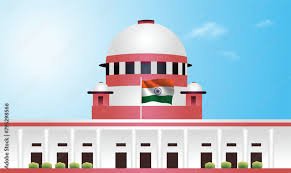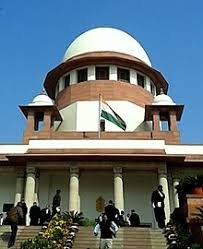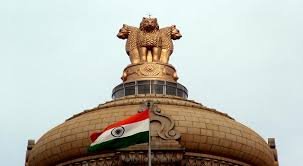Appellant, Neelam Kumari, was convicted under Section 302 of the Indian Penal Code, 1860, for the murder of her infant son and sentenced to life imprisonment. She was the second wife of Nikku Ram (PW-1) and gave birth to a male child in 2005.
The appellant reportedly threatened her husband that she would kill their son if compelled to visit his ancestral village Katli. On December 8, 2006, after visiting Katli for post-death rituals of Nikku Ram’s father, the appellant, Nikku Ram, and their child returned to village Nand. Nikku Ram left for the market, leaving the appellant and child at home.
Upon his return around 8:30 p.m., Nikku Ram found them missing. The next morning, he was informed his son was ill. The child was found lying on a cot and, upon examination by Dr. Sandesh Guleria (PW-2), appeared to have been strangulated, with a circular mark on his neck. The child was declared brought dead at Nalagarh hospital.
Autopsy by Dr. Sunita Sood (PW-10) found nail marks and ligature marks around the neck, concluding the cause of death was asphyxia due to throttling. She believed a dupatta caused the marks.
The prosecution alleged extra-judicial confessions made by the appellant to Nikku Ram (PW-1), Umrawati (PW-5), Bhagwanti (PW-4), and Krishan Lal (PW-3).
A green dupatta, allegedly used in the crime, was produced by the appellant during interrogation, and forensic reports indicated blood and human skin tissues on it.
The appellant pleaded not guilty, claiming her son was found unconscious in village Katli and she sought medical help. She also alleged threats from Nikku Ram’s first wife.
The Trial Court convicted her in 2007, and the High Court affirmed the conviction in 2009. This appeal challenged the High Court’s judgment.
Law Involved
Section 302 of the Indian Penal Code, 1860: Conviction for murder.
Section 313 of the Code of Criminal Procedure, 1973: Examination of the appellant where she negated extra-judicial confessions and provided an alternative explanation.
Extra-judicial confessions: Considered weak evidence and require corroboration by other independent evidence. Courts must examine them with “greater degree of care and caution”.
Circumstantial evidence: Must satisfy five “golden principles”:
Circumstances of guilt must be fully established.
Facts must be consistent only with the hypothesis of guilt of the accused, excluding any other.
Circumstances must be conclusive.
They must exclude every possible hypothesis except the one to be proved.
There must be a complete chain of evidence leaving no reasonable doubt consistent with innocence.
Non-examination of relevant witnesses: May lead to an adverse inference against the prosecution.
Motive: While absence of motive alone may not acquit if other circumstances form a complete chain, it significantly weighs in favor of the accused and creates reasonable doubt in circumstantial evidence cases.
Reasoning
Extra-judicial confessions: The Court found these confessions to suffer from serious infirmities and could not be relied upon. The appellant negated them in her Section 313 Cr.PC statement.
Non-examination of witness: The prosecution failed to examine Sita Devi, a woman who came upon hearing the appellant’s cries and was allegedly a non-interested witness to the extra-judicial confession, casting doubt on the prosecution’s case.
Uncertainty of whereabouts and time gap: The appellant’s whereabouts during the critical period were not conclusively established, and her husband’s statement contradicted her version of staying in Katli. A significant two-hour gap between alleged strangulation and death, and eight hours before medical examination, introduced considerable uncertainty, allowing for other individuals to have had access to the child. This weakened the chain of events.
Alleged murder weapon (dupatta):
It was a commonly available dupatta, and the appellant denied producing it.
It was never shown to Dr. Sunita Sood (PW-10) who conducted the postmortem, creating a “fundamental disconnect”.
While forensic tests found blood and human skin tissues, no evidence established these belonged to the deceased child, rendering the evidence ambiguous.
The finding that the cause of death “could be due to throttling” was tentative.
Inconsistent subsequent conduct: The appellant’s act of seeking medical assistance for the child shortly after the alleged murder was deemed “difficult to reconcile with guilt” and more consistent with innocence.
Lack of convincing motive: The prosecution failed to establish any credible motive, finding the suggested motive (killing the child because her husband visited Katli) illogical, especially as she herself visited with the child. Such an extreme act also goes against a mother’s natural instinct. The absence of motive significantly weighs in the appellant’s favor.
Circumstantial evidence failure: The Court concluded that the circumstantial evidence did not form a complete chain conclusively pointing towards the appellant’s guilt, failing the “golden principles”.
Holding
The Supreme Court found that the prosecution failed to establish the guilt of the appellant beyond reasonable doubt. The Appeal was allowed. The conviction and sentence of the appellant under Section 302 of the IPC were set aside. The appellant was acquitted of the offence alleged against her and discharged from her bail bonds.
NEELAM KUMARI V. THE STATE OF HIMACHAL PRADESH
Supreme Court: 2025 INSC 1013 (DoJ 20-08-2025)








